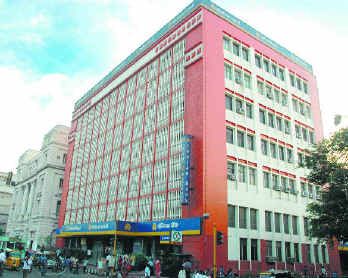Mumbai, MAHARASHTRA :

Mumbai:
Sarah Rizvi has done her bit to issue a blow to the stereotype of the Muslim woman, moderately educated and socially subjugated, ensconced in hijab. She has cleared the IAS exam, ranking 86th among 734 successful candidates. More remarkably perhaps, she has achieved the feat with Urdu literature as one of her optional subjects.
“Urdu is my mothertongue. I learnt Urdu and Persian from my late grandfather, Khalid Hussain Khan, who was a lawyer in Uttar Pradesh. I have read Urdu poems and novels since childhood. My Urdu writing speed was bad but I wrote a page a day and that improved my pace of writing,’’ Sarah said. Mohammed Iqbal was, for her, the most difficult poet to understand. “But his shayeri is fabulous,’’ she said of the Kashmiri poet who wrote Sare Jahan se achchha, Hindustan hamara.
After finishing BCom from MMK College in 2003, Sarah attended a lecture on competitive exams by K M Arif, educationist and chairman of Alliance Foundation. That inspired her to go for the IAS. “I tried twice but could not clear even the preliminary stage. This was my third attempt and, masha Allah, I passed,’’ the 25-year-old said, adding that her success was the outcome of 10-12 hours of study a day.
While doing her BCom, Sarah also completed her foundation course in chartered accountancy. “I wanted to become a CA but Dr Arif suggested I study for the IAS exam instead. I was clueless about the exam procedure and the requisite study material but my family supported me,’’ she said. Sarah was also awarded a scholarship by MESCO, an NGO.
Sarah is now posted as section officer in the Haryana Accountant-General’s office.
Sarah’s father, Afzal Ahmed, a science graduate, and mother Nigar, an arts graduate from Aligarh Muslim University, run a small garments business.
Her elder brother, Wasif, a civil engineer, is working for a company in Dubai and Sarah’s twin sister, Sameera, a graduate in computer applications, from National College, is married and lives in Bahrain. “I feel more Mulims, especially women, should go for the competitive exams. Many women don’t even know what these exams are about but awareness is spreading,’’ Sarah said.
“This subject gives us an inside knowledge of government administration. And the topics are similar to the business administration course matter I read in college,” Sarah said, explaining why she chose public administration over accountancy as one of the optionals.
Sarah did her schooling from Canossa Convent School and St. Louis Convent High School in Andheri. She later joined CWC College for Commerce and Economics and eventually graduated from MMK College with 75.7 per cent marks.
(Courtesy Times of India)
source: http://www.ummid.com / Ummid.com / Home / by Mateen Hafeez, TNN (headline edited)




















